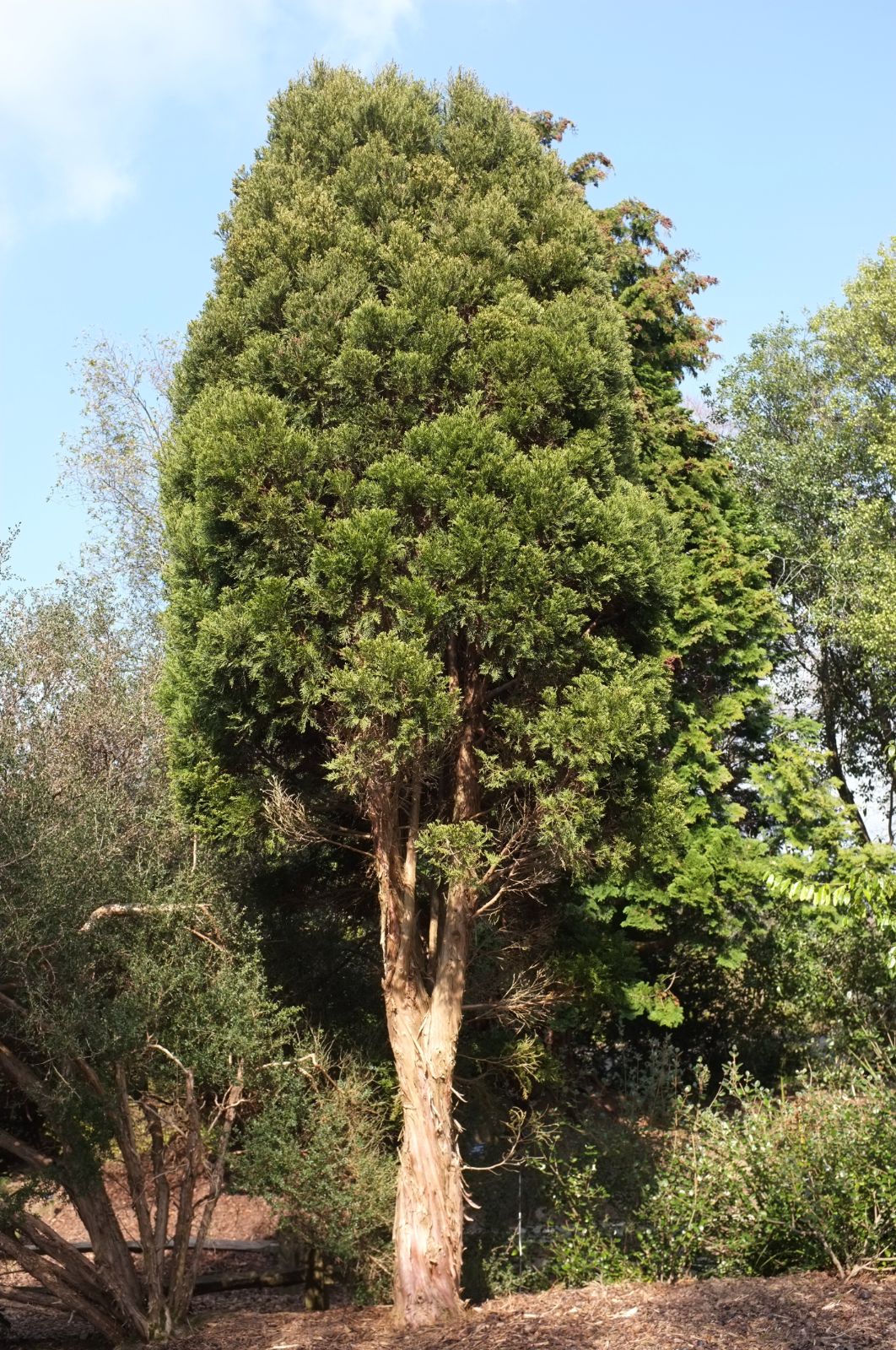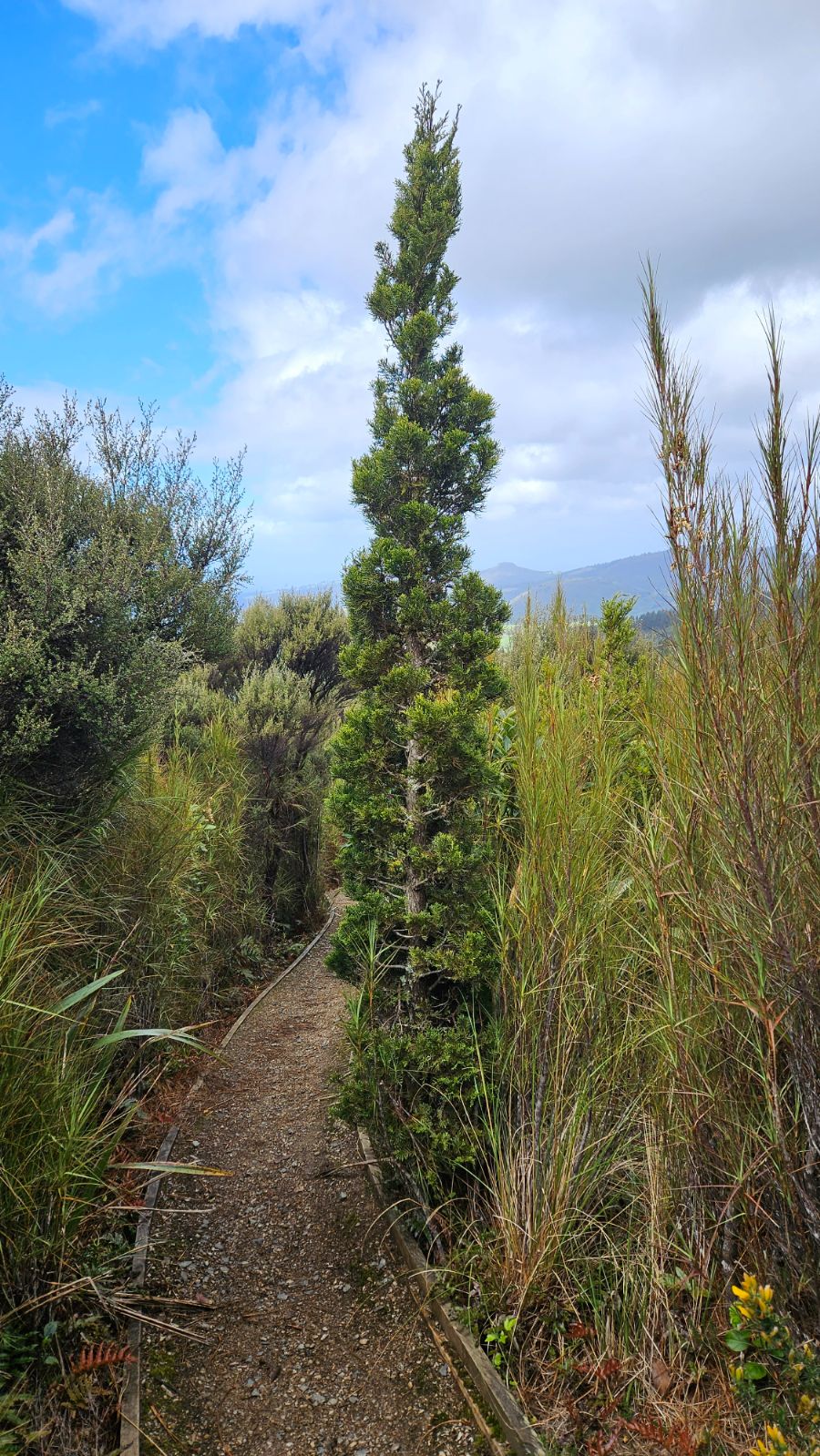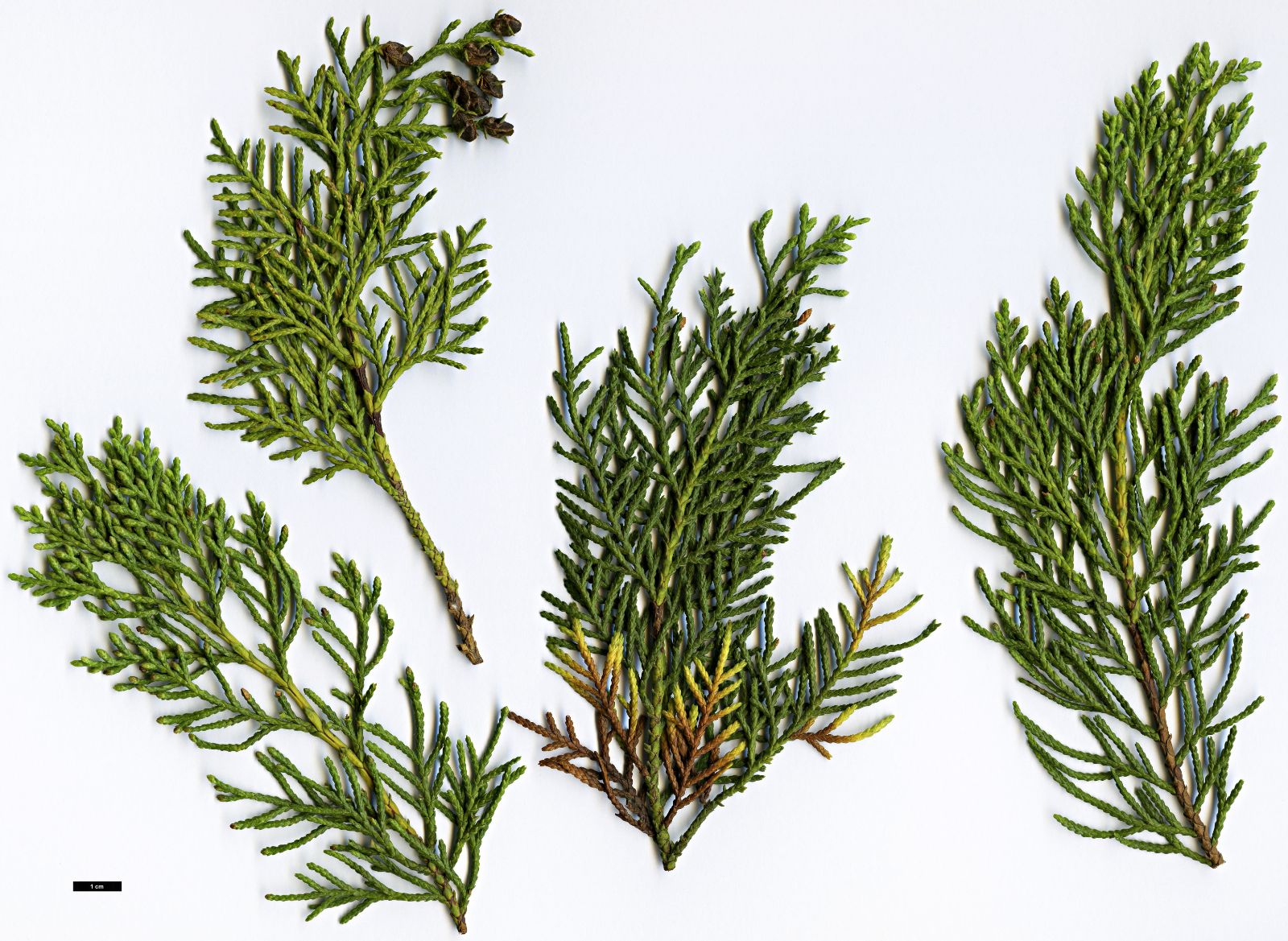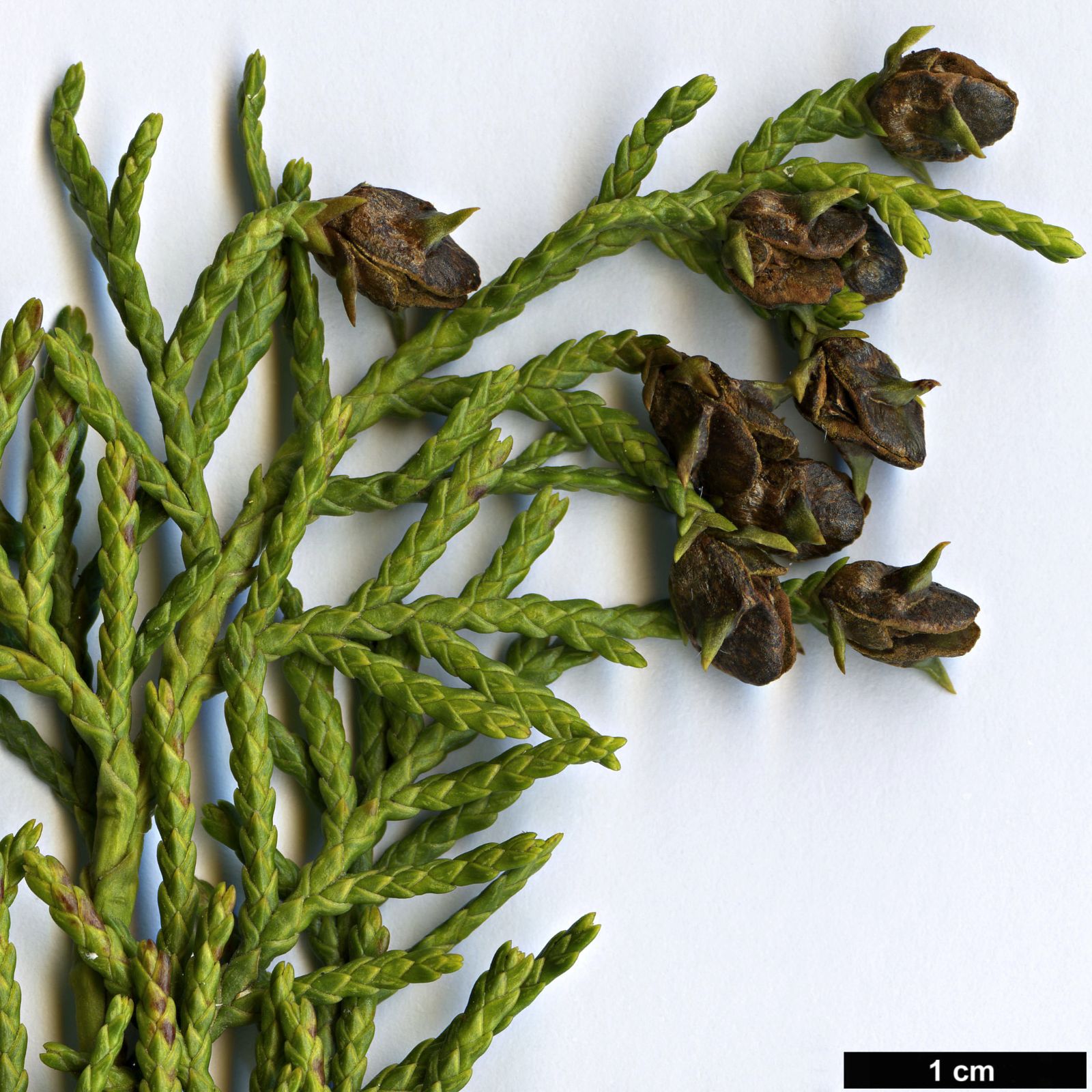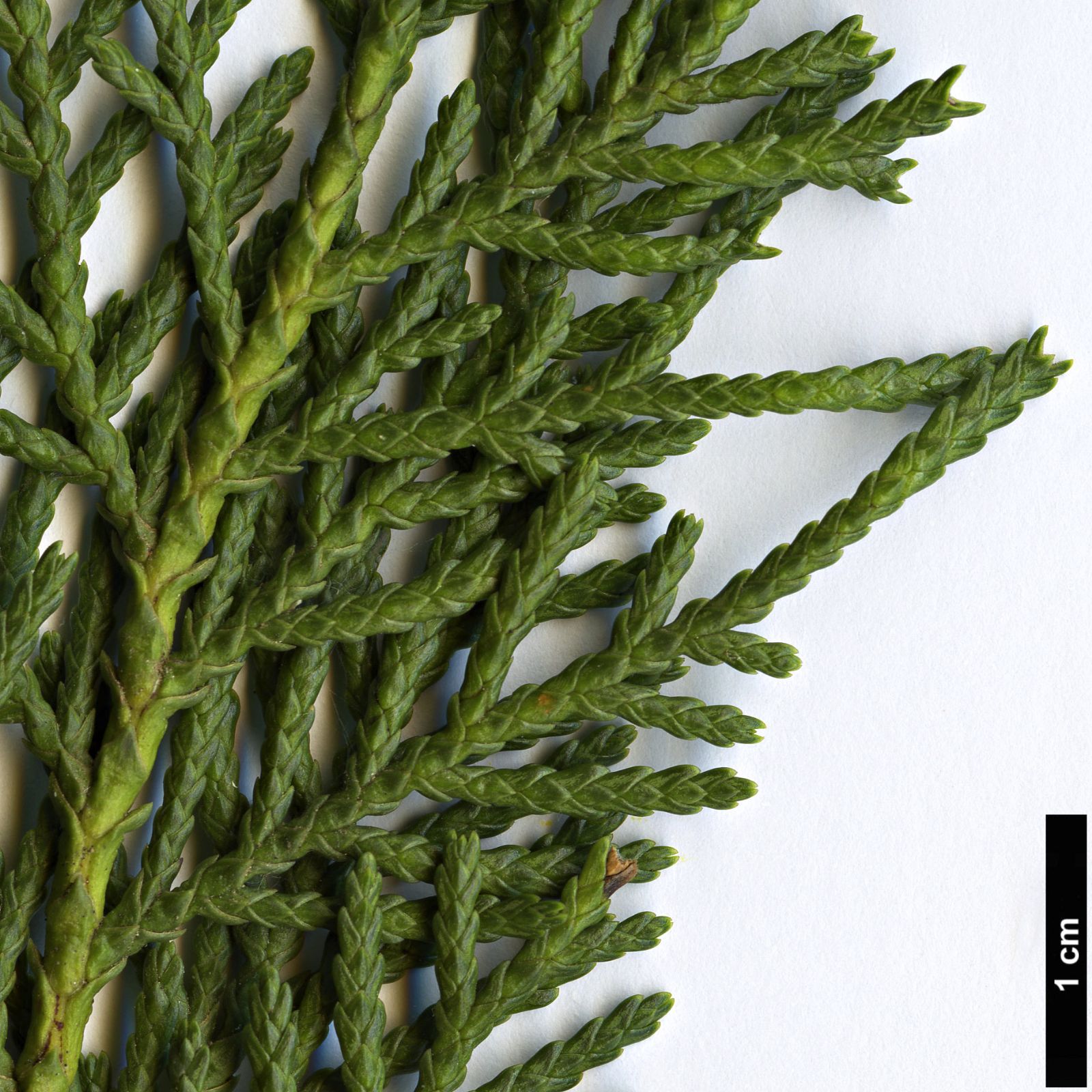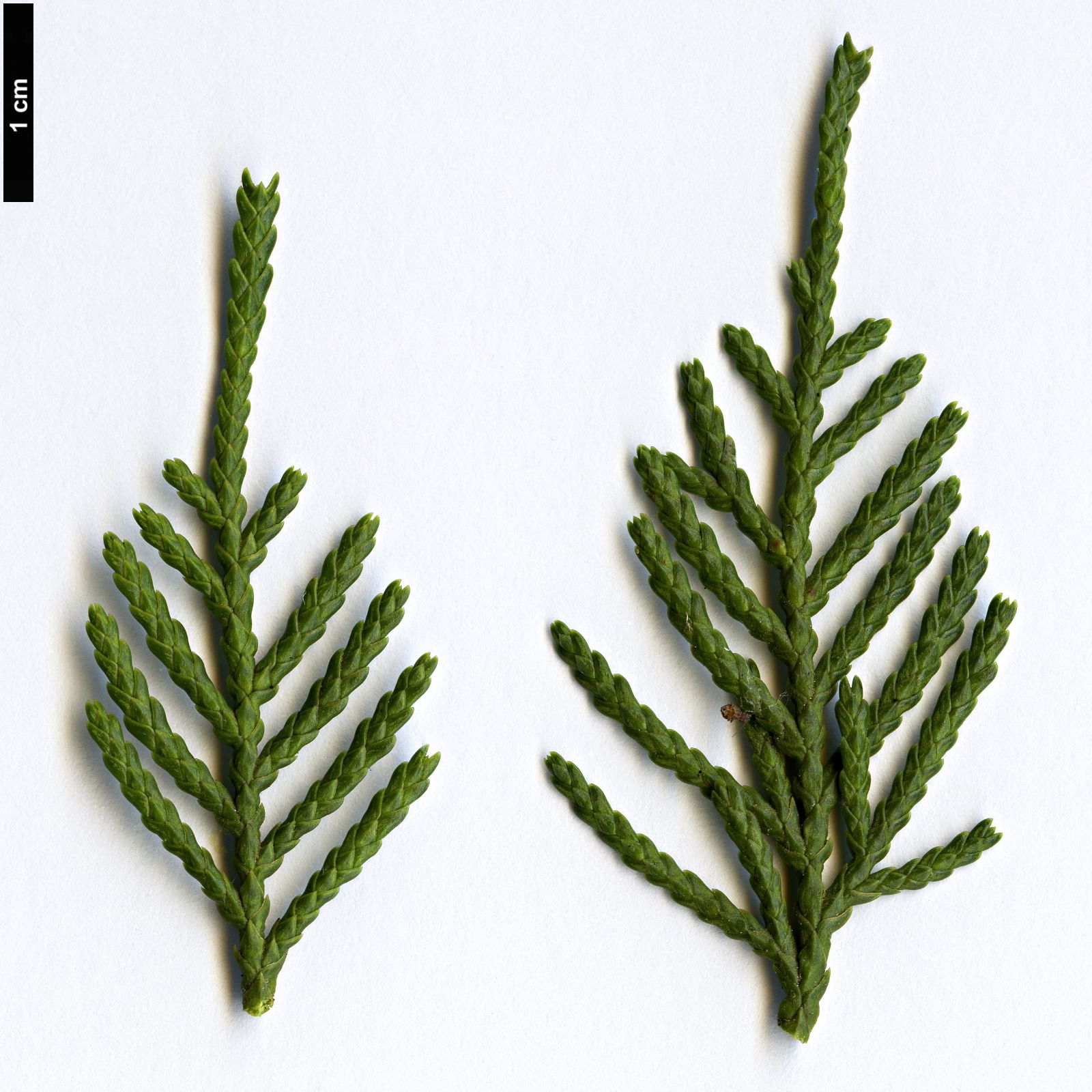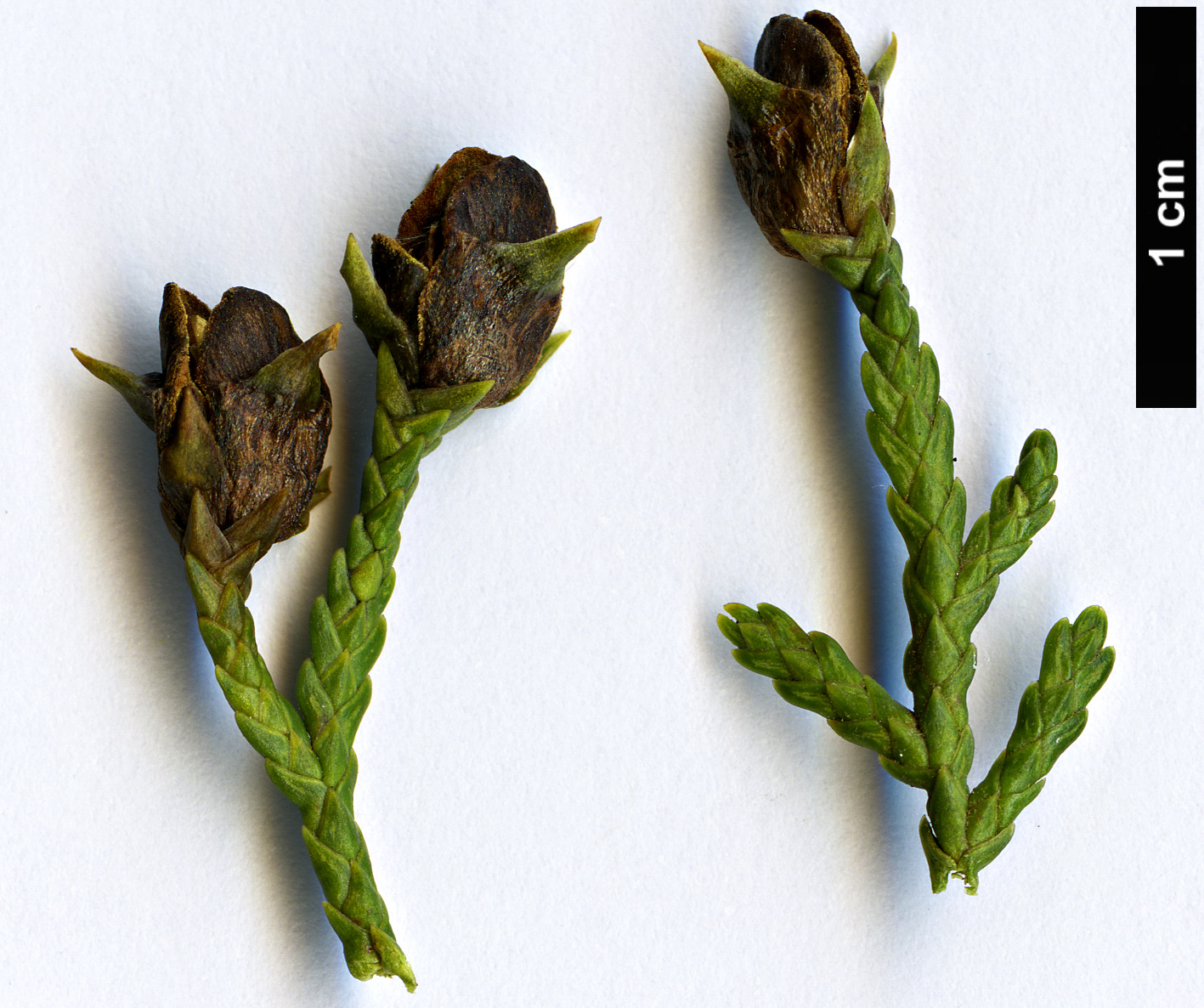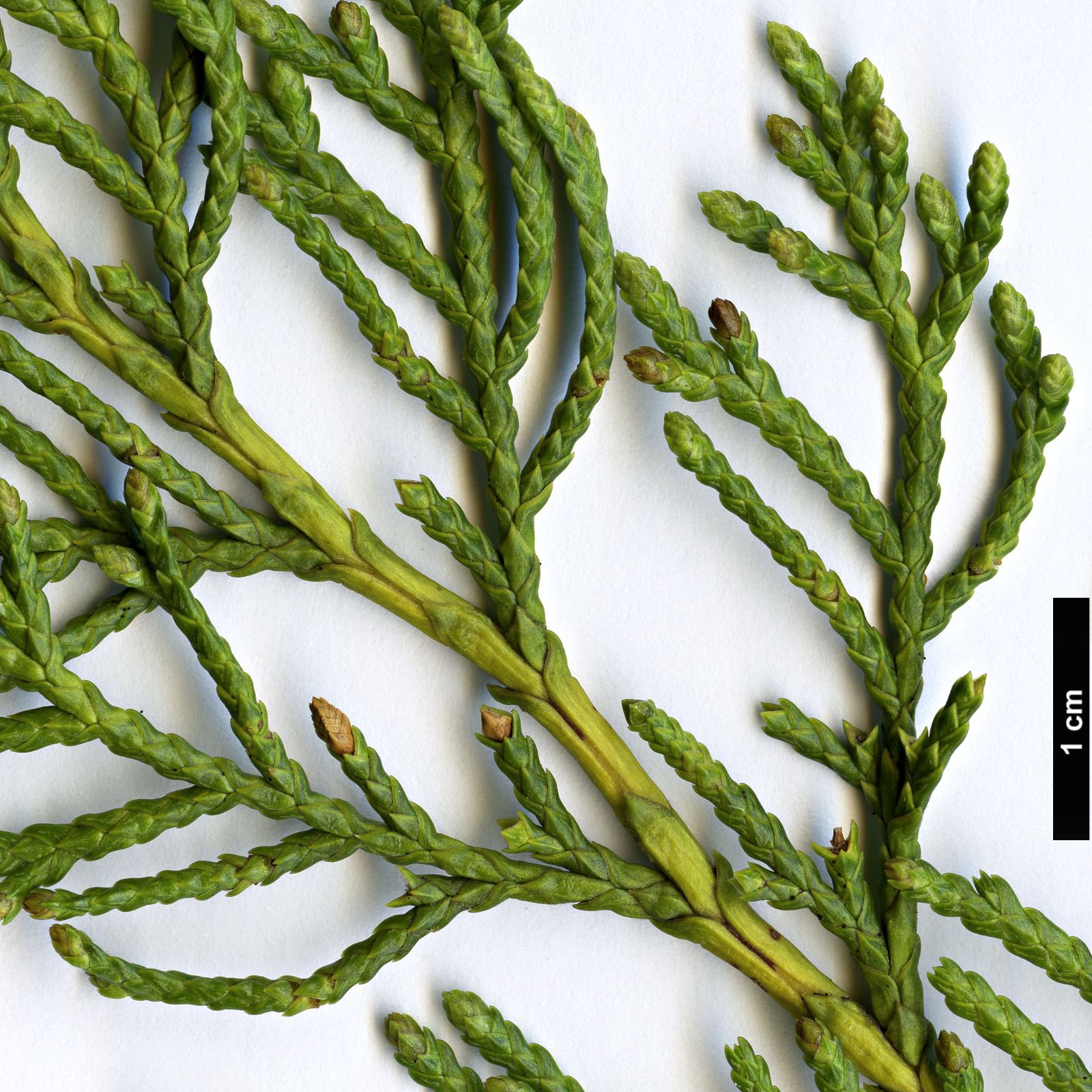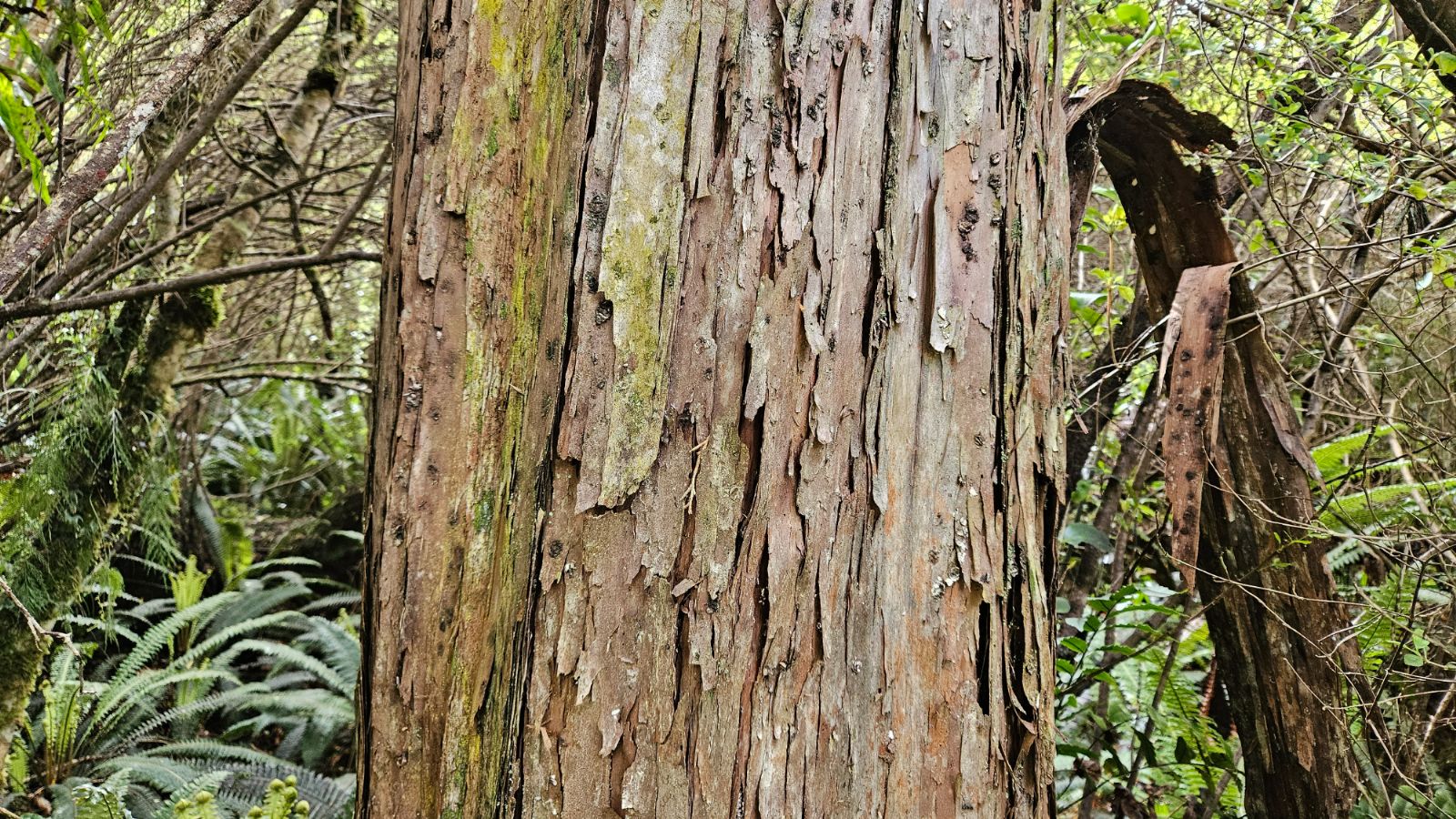Libocedrus bidwillii
Credits
Article from New Trees by John Grimshaw & Ross Bayton
Recommended citation
'Libocedrus bidwillii' from the website Trees and Shrubs Online (treesandshrubsonline.
Genus
Common Names
- Mountain Cedar
- Pahautea
Tree to 21 m, trunk long and straight, to 1 m dbh. Bark thin, fibrous, reminiscent of parchment, peeling in long strips. Crown initially fastigiate, later pyramidical or conical. Juvenile foliage branchlets slightly flattened, fern-like; mature branchlets entirely distichous. Juvenile leaves dimorphic, with laterals to 0.3 cm long and facials to 0.1 cm long; mature leaves triangular, decussate, appressed, densely crowded, 0.2 cm long and only slightly dimorphic, the lateral pairs slightly longer than the facial pairs. Male strobili 0.6–1.1 cm long, with 10–12 microsporophylls; several adjacent shoots bearing solitary strobili, giving the appearance of a cluster. Female cones ovoid, 0.7–0.8 cm long, greenish black, turning pale brown. Seed scales in two decussate pairs, valvate, only inner scales fertile, one seed per scale; umbo to 0.5 cm long, foliose. Seeds lenticular, wings two, uneven, 0.1–0.2 cm long and 0.7–0.8 cm long, golden brown. Allan 1961, Farjon 2005b. Distribution NEW ZEALAND: North Is., South Is. Habitat Montane, subalpine and lowland forests between 250 and 1850 m asl. USDA Hardiness Zone 8. Conservation status Lower Risk. Illustration Salmon 1996; NT448. Cross-references B567, K164. Taxonomic note Libocedrus plumosa is the other New Zealand native species, and can be distinguished from L. bidwillii by its larger cones (1.5 cm long or more) and strongly dimorphic lateral and facial leaves.
Libocedrus bidwillii was briefly discussed by Bean (1981a) but it is now slightly more frequently grown, and certainly deserving of more attention as a very handsome tree. A 3 m specimen seen at Logan is a dense column of dark green foliage, on neatly branched shoots, perhaps a little less sculpted than L. plumosa growing nearby, but doing well even if rather shaded. This specimen is derived from a collection made by C.N. Page (no. 106643) in South Island, New Zealand in 1976. It is grown in a scattering of gardens in the south and west of the British Isles, but could be tried more widely since it is at least as hardy as L. plumosa (more so, according to Dallimore et al. 1966). The tallest individual recorded in the British Isles was 9 m (13 cm dbh) at Blackmoor, Bordon, Hampshire, but a more substantial specimen at Headfort, Co. Meath was 8.5 m with a diameter of 34 cm at 1 m when measured by Alan Mitchell in 1980 (TROBI). Johnson (2007) regards it as a short-lived species in the British Isles. It should be given a sheltered warm place in fertile, preferably acidic, moist soil.


